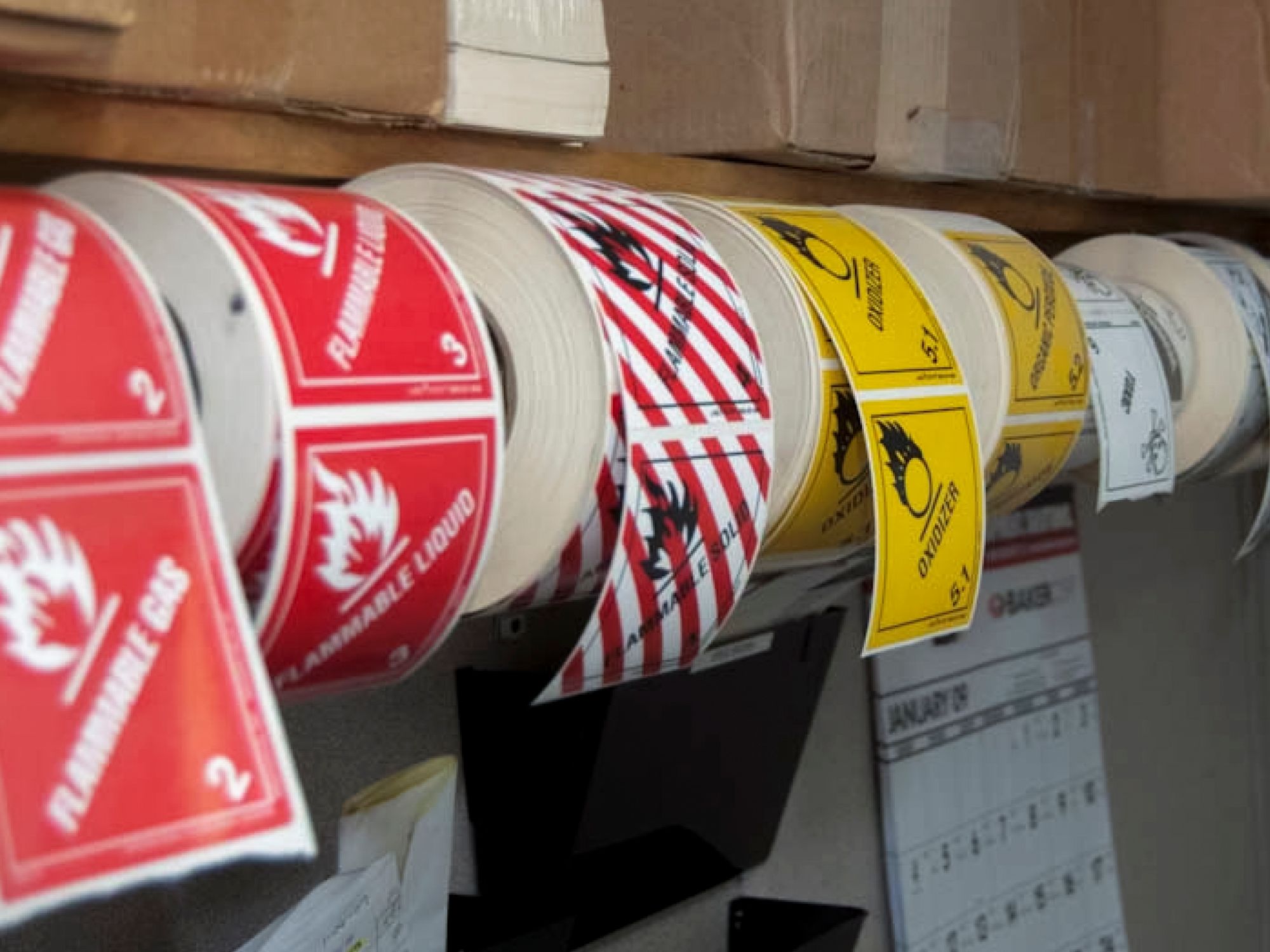Department of Transportation (DOT) labeling requirements

- Various applicability, exceptions, and modifications apply to labeling depending on the specific waste and quantity.
Labels are printed on or affixed to packages containing hazardous materials. Labels are color- and symbol-coded to provide easy and immediate warning of the hazardous materials inside the package. The regulations have specific requirements for design, use, placement, prohibitions, and exceptions for labels.
The labeling of packages of hazardous materials is the responsibility of the shipper and packages must be properly labeled at the time they are offered for transport. (172.400)
Although the shipper is responsible for the actual labeling, the carrier also has labeling responsibilities. A carrier must only accept and transport packages that have been properly labeled. (177.801)
Various applicability, exceptions, and modifications apply to labeling depending on the specific waste and quantity.
General requirements
Once a material has been classified and a proper shipping name has been selected, determining the appropriate labels is a fairly easy process.
- Locate the selected proper shipping name in Column (2) of the Hazardous Materials Table (172.101).
- Refer to Column (6) of the Table for the appropriate label code(s).
- The first label code listed indicates the material’s primary hazard. Any additional label codes indicate subsidiary hazards. (172.101)
- Using the label codes from Column (6) in the Table, find the name of the label(s) required to be on the package in the label substitution table in 172.101(g).
Except for the label code 6.1, the label codes are the same as the hazard classes or divisions and only one label is possible. For example, a 2.3 label code is a 2.3 (poison gas) label, a 3-label code is a Class 3 (flammable liquid) label, and a 5.1 label code is a 5.1 (oxidizer) label.
For the label code 6.1, there are two possible labels. If the material has an inhalation hazard, Zone A or B, a Poison Inhalation Hazard label is required. If the material does not have an inhalation hazard, Zone A or B, a Poison label is required.
Each package containing a hazardous material must be labeled with the label(s) prescribed in Column (6) of the Hazardous Materials Table. (172.400)
If the material has more than one hazard, all applicable subsidiary labels may not be listed in the Table (such as generic or n.o.s. shipping names). If this is the case, subsidiary labels must be determined according to 172.402. (172.101)
A Division 6.1 subsidiary label is not required on a package containing a Class 8 material which has a subsidiary hazard of Division 6.1, if the toxicity of the material is based solely on the corrosive destruction of tissue rather than systemic poisoning. Also, a Division 4.1 subsidiary label is not required on a package bearing a Division 4.2 label. (172.400a)
